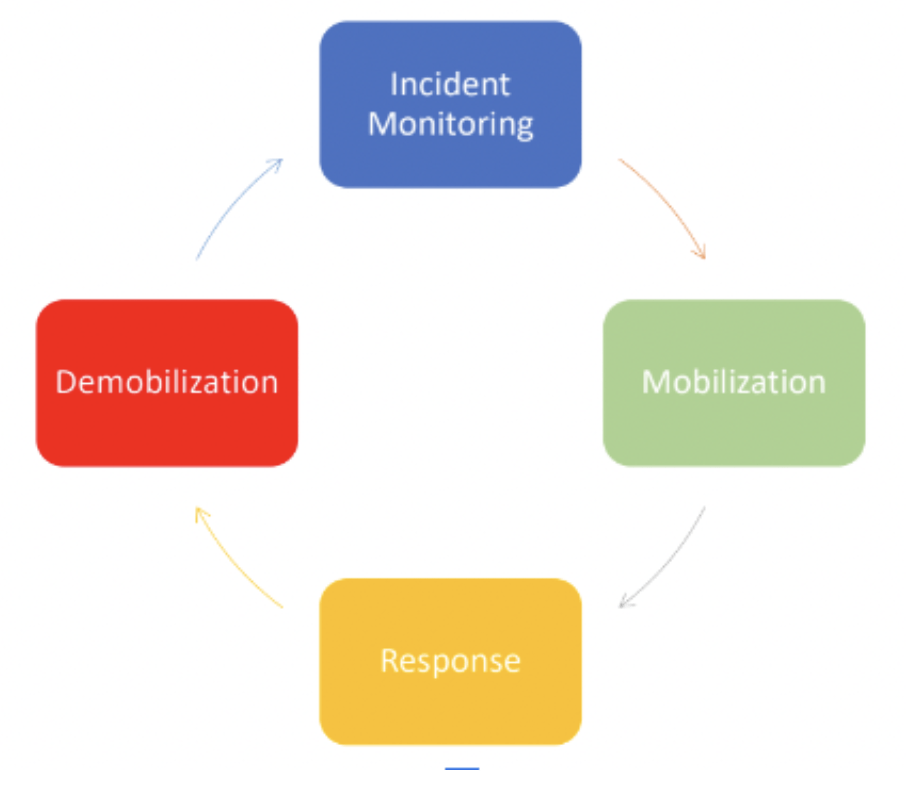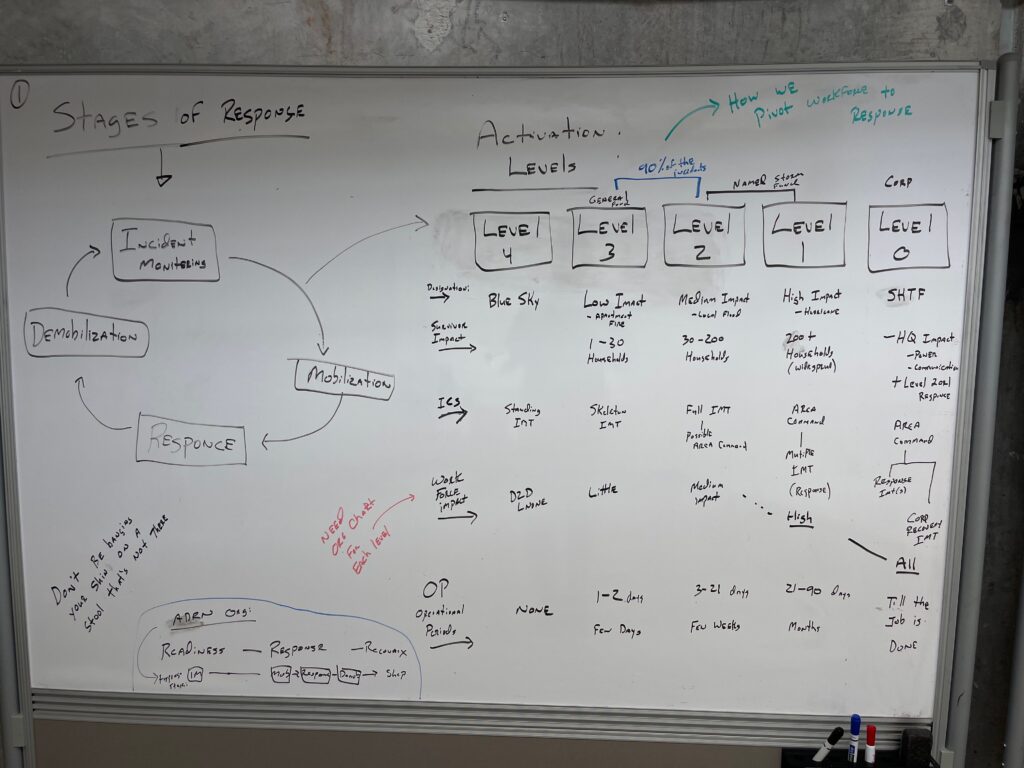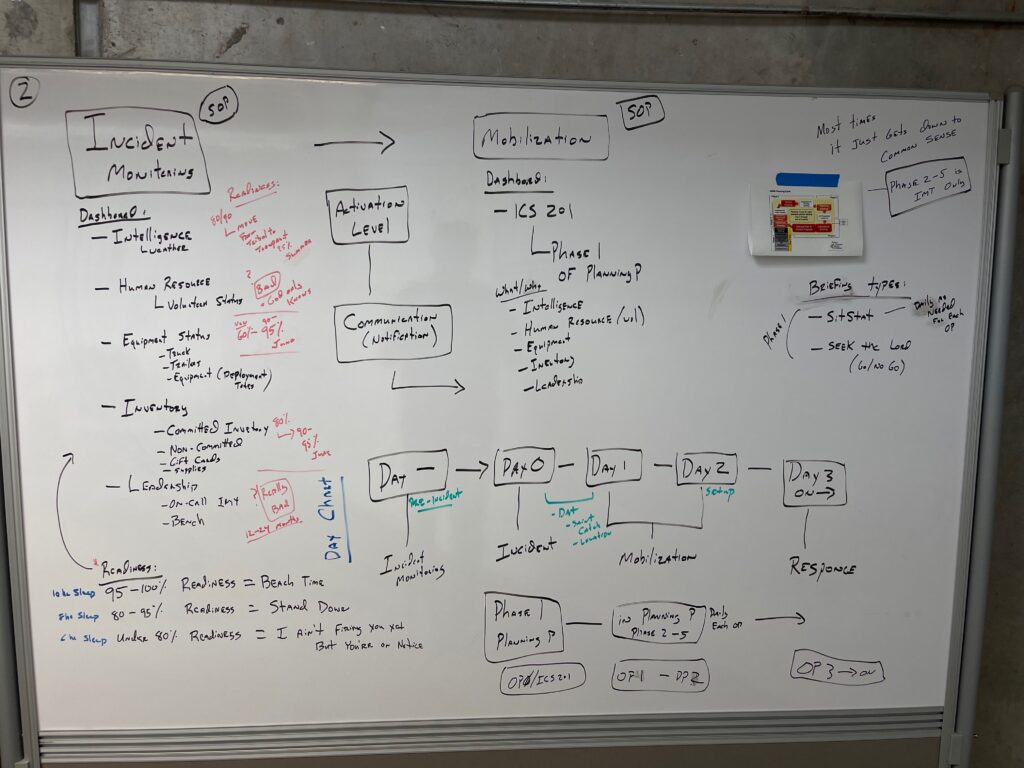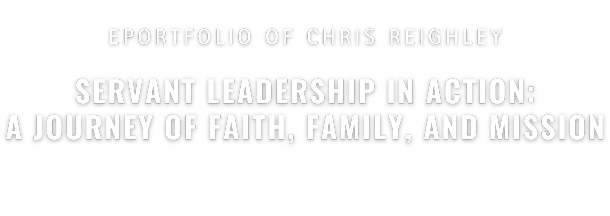— reflection on critical thinking
Restoring Purpose:
How Critical Thinking and Faith Drive ADRN’s Response 3.0
Disaster isn’t just a test of resources—it’s a test of the human spirit. In 2023, I was called back to Austin Disaster Relief Network (ADRN) to lead Response 3.0, a critical initiative aimed at realigning the organization’s disaster response with its mission of Christ-centered care. After starting as a volunteer in 2015 and becoming the Field Operations Manager in 2016, I had seen firsthand how ADRN’s unique blend of physical, emotional, and spiritual care transformed lives. However, by 2018, as I shifted to a mutual aid role, I noticed that ADRN’s focus had begun to drift—logistics started to overshadow the mission. When I returned in 2022, it was clear that we needed more than operational fixes; we needed a complete reset.
Response 3.0 was our answer. It was more than just a framework for disaster response—it was a call to restore the core of what makes ADRN unique. This project required deep critical thinking to ensure that every action, every decision, reflected our commitment to meet not only physical, emotional, and spiritual needs but also to bring hope and healing through faith. It was about rethinking disaster relief from the ground up, ensuring that we stayed true to our mission while adapting to the realities of crisis response. This is how Response 3.0 became both a strategic and spiritual transformation.
Identifying the Problem: Chaos and Disconnect
Upon my return, it became evident that ADRN faced significant operational challenges. The leadership was struggling to navigate disaster response effectively, with a growing emphasis on logistics that risked overshadowing the emotional and spiritual care ADRN had always been known for. The mission to “equip, empower, and mobilize the Church of Greater Austin to shepherd those affected by disaster” seemed to be slipping into the background as logistical concerns took precedence (ADRN, 2017, p. 7). The question before me was clear: How could we restore the balance between logistical response and our core mission of bringing holistic care to survivors?
This was not a simple problem. It required critical thinking to identify the root causes and to develop a solution that was not only operationally sound but also spiritually grounded. As James W. Sire argues in The Universe Next Door, our worldview shapes how we act (Sire, 2009, p. 7). For ADRN, this meant that our response framework needed to reflect our belief that disaster relief should meet both physical and spiritual needs. Anything less would compromise our identity as a Christ-centered ministry.
Building Response 3.0: Turning Chaos into Christ-Centered Care
Developing Response 3.0 was about more than updating procedures; it was about redefining our entire approach to disaster response. Drawing from years of field experience and leadership, I knew that the solution had to integrate both the logistical and spiritual aspects of our mission. The critical thinking process described by Geisler and Brooks in Come Let Us Reason guided my approach. They emphasize that true critical thinking involves breaking down complex problems, examining assumptions, and building solutions based on sound reasoning (Geisler & Brooks, 1990, p. 54).

The Response 3.0 framework was built around distinct phases of disaster response, each designed to ensure that ADRN could meet both immediate and long-term needs:
- Incident Monitoring: This is where it all begins. By monitoring potential risks and ensuring that ADRN’s resources—volunteers, equipment, and leadership—are in place, we can move quickly when disaster strikes. Critical thinking here focuses on strategic preparation, ensuring that every asset is ready to be deployed.
- Mobilization to Response: The heart of Response 3.0 is the response phase, which escalates through different levels of disaster impact. As shown in the Stages of Response charts, there are multiple activation levels, ranging from Level 4 (Blue Sky) to Level 0 (SHTF) (How a Response Begins, 2023, p. 3). Each level represents an increasing scale of disaster impact, requiring more resources and coordination:
- Level 3: Low Impact Incident: For smaller disasters like apartment fires, ADRN can activate a limited Incident Management Team (IMT) and focus on immediate relief while providing spiritual support.
- Level 2: Medium Impact Incident: For larger disasters, such as local floods, ADRN deploys more personnel and coordinates across multiple teams, ensuring that emotional and spiritual care teams are embedded within the logistical response (ADRN, 2023, p. 24).
- Level 1: High Impact Incident: For major disasters like hurricanes, ADRN coordinates with external partners and deploys full IMTs to ensure both immediate relief and long-term spiritual care.
- Level 0: SHTF (When Everything Fails): This is the most critical level, where ADRN must operate under extreme conditions, often with limited infrastructure. Even in these moments, our mission remains the same: to bring hope and healing (ADRN, 2023, p. 32).
- Recovery and Shepherding: Once immediate needs are addressed, ADRN transitions into the recovery phase. The Shepherding Program ensures that survivors receive long-term emotional and spiritual care through local churches. Critical thinking in this phase focuses on how best to transition survivors from crisis to recovery, ensuring they have the support they need for long-term healing.

Facing Risks and Reaping Rewards
Implementing Response 3.0 was not without its risks. Asking leadership to embrace a new disaster response model—one that emphasized spiritual care alongside logistical response—required a significant shift in thinking. Some worried that focusing on spiritual care might slow down the more pressing logistical work. But I knew from my experience that spiritual and emotional care is not secondary; it is essential to true recovery.
The reward for taking this risk was clear during one of our early deployments under Response 3.0. During a Central Texas flood, we not only provided immediate shelter and food but also initiated Spiritual First Aid from the outset. One survivor said, “You didn’t just bring food—you brought me hope.” That statement encapsulated everything we were striving for with Response 3.0. We were not just addressing physical needs but ministering to the whole person. This experience affirmed that taking the risk to prioritize spiritual care was not only the right choice but also the key to making a lasting impact (ADRN, 2023, p. 18).


Lessons Learned: Aligning Mission with Critical Thinking
Reflecting on Response 3.0, the most significant lesson is clear: critical thinking is not only essential but transformative in aligning our mission with our practice. When I returned to ADRN, it was evident that logistics had taken the spotlight, threatening to overshadow the heart of our work. Through the development of Response 3.0, however, we re-centered our focus on what truly matters—restoring hope through Christ. Disaster response, as we rediscovered, isn’t just about meeting immediate physical needs; it’s about addressing the deeper, often unseen, emotional and spiritual needs of those in crisis. Our mission at ADRN has always been to glorify God by caring holistically for survivors, and this initiative ensured we stayed true to that calling.
Response 3.0 wasn’t just a framework—it was a comprehensive approach to rethinking how we respond to disaster at every level. From the Readiness Phase, ensuring we had the right resources, volunteers, and equipment in place, to the Response Phase, where every decision was tied to activation levels designed to scale our efforts from small incidents to full-scale disasters. The incorporation of Emotional & Spiritual Care was a core part of the plan, ensuring that chaplaincy and spiritual care teams were embedded alongside logistical teams at every stage. Whether it was through the Incident Monitoring Process, the Mobilization SOP, or the comprehensive Shepherding Program that followed each disaster, Response 3.0 put our mission front and center.
Critical thinking throughout this process allowed me to identify gaps—whether in training, communication, or deployment—and challenge long-held assumptions about disaster response. We weren’t just tweaking a system; we were fundamentally restructuring how we viewed disaster relief, ensuring that ADRN’s core values informed every part of the response. As Geisler and Brooks remind us, critical thinking isn’t just about solving problems—it’s about ensuring that the solutions reflect our deepest purpose (Geisler & Brooks, 1990, p. 54). For ADRN, that purpose is bringing Christ’s love into the darkest moments of people’s lives.
Response 3.0 wasn’t merely a project—it was a reaffirmation of who ADRN is at its core. It restored our focus on holistic care, blending logistics with ministry. Moving forward, the lessons I’ve learned from this experience will continue to shape my leadership. Disaster response, when guided by the lens of critical thinking and faith, is more than meeting needs—it transforms lives. Ultimately, it’s not just about what we do; it’s about why we do it, and how, through careful thought and action, we can bring hope into even the most chaotic circumstances.
References
Austin Disaster Relief Network. (2017). Response 3.0 presentation [PowerPoint slides]. Austin Disaster Relief Network.
Austin Disaster Relief Network. (2023). Field Ops change recommendations [PDF document]. Austin Disaster Relief Network.
Austin Disaster Relief Network. (2023). How a response begins [PDF document]. Austin Disaster Relief Network.
Geisler, N. L., & Brooks, R. M. (1990). Come, let us reason: An introduction to logical thinking. Baker Book House.Sire, J. W. (2009). The universe next door: A basic worldview catalog (5th ed.). InterVarsity Press.

